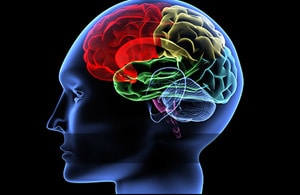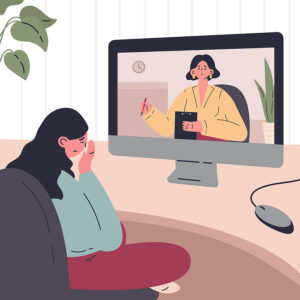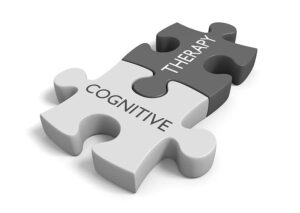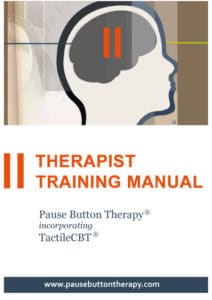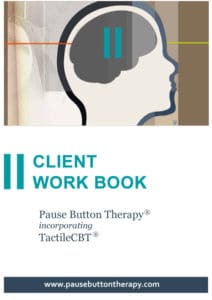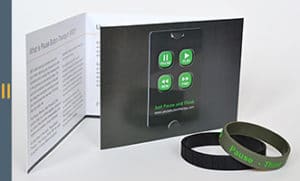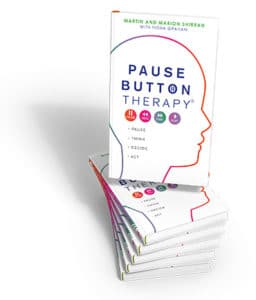Depression, Sadness and CBT
Depression, Sadness and CBT to the rescue. CBT or the up-graded version TactileCBT works extremely well around the treatment of depression and general sadness. The approach helps clients to understanding their thought patterns: Therapy starts by helping individuals become aware of their negative thoughts and how they often affect their mood. They learn how to quickly identify and challenge negative or distorted thinking patterns, such as all-or-nothing thinking or self-blame.
Depression
Depression is more than just feeling sad or down for a short period. It is a mental health condition where a person feels persistently sad, empty, or hopeless for a long time. Depression can affect a person’s thoughts, emotions, behaviors, and physical well-being. It may make it difficult to enjoy activities, it often affects appetite and sleep, and can impact on daily life.TCBT equips individuals with coping skills to manage depressive symptoms. This includes learning relaxation techniques, problem-solving skills, and effective communication strategies. They learn to develop healthier habits and responses to stressful situations. In cases where depression is accompanied by avoidance or anxiety, CBT may use gradual exposure techniques. This involves facing feared situations or activities in a step-by-step manner, helping individuals confront and overcome their fears.
Sadness
Sadness is a normal emotion that everyone experiences from time to time. It can be a response to specific events or situations. Including losing a loved one, facing a disappointment, or going through a difficult time. Sadness is usually temporary and tends to fade as time passes or when the situation improves. its intensity and duration may vary from person to person.When someone is sad, they may experience feelings of sorrow, melancholy, or grief. They might have a sense of heaviness or emptiness in their heart. Additionally, they may cry or withdraw from activities they usually enjoy. Sadness can also affect a person’s energy level, appetite, and sleep patterns. Sadness is a normal part of being human and does not necessarily indicate a mental health disorder. In fact, experiencing sadness can help people reflect, grow, and develop resilience.
Depression, Sadness and CBT
However, if sadness becomes overwhelming, persists for an extended period, or significantly interferes with daily functioning and well-being. Then it may be a sign of clinical depression or another mental health condition. In such cases, seeking support from a mental health professional can be beneficial to assess the situation and determine the appropriate course of action. Remember, it is important to allow ourselves to feel and express sadness when it arises, while also taking care of our emotional well-being and seeking help when needed.
Cognitive-Behaviour Therapy or the new TactileCBT
CBT – TCBT is a type of therapy that helps people to understand and change the way they think and behave. It is often used to treat various mental health issues, including depression. In TCBT, a therapist works with an individual to identify negative thought patterns and behaviors that contribute to their depression. During TCBT, the person learns to recognise unhelpful or distorted thoughts and replace them with more realistic and positive ones. They also work on changing behaviors that maintain or worsen depression, such as social withdrawal or avoidance of enjoyable activities. TCBT may involve setting goals, learning coping skills, and practicing new ways of thinking and acting.
Depression, Sadness and CBT
The aim of TCBT is to help individuals develop healthier and more adaptive thought patterns and behaviors, which can lead to improved mood and functioning. CBT is often structured and focused on specific goals, and it empowers individuals to actively participate in their own healing process. During the sessions the therapist works collaboratively with the individual, providing guidance, support, and feedback. The goal is to help individuals develop long-lasting skills and strategies to prevent future episodes of depression.
How Many Sessions?
How many sessions are required is the million dollar question most clients ask. Traditional CBT is normally delivered over 20 to 30 sessions, usually on a weekly basis. TactileCBT tends to deliver a quicker turnaround, normally around 10 to twelve sessions. Sometimes in therapy a breakthrough moment occurs, that helps a person understand themselves and their problems in a new and helpful way. It’s when they have a sudden realization or insight that brings about positive changes in their thoughts, feelings, and actions. In Tactile CBT we call the situation ‘Life Architecture’ it is when we get the client to the point in therapy that they understand that they really can and should be the architects of their life going forward, it is after all, their birth right.
Consult a Professional
It’s important to note that CBT/TCBT may be used alone or in combination with other treatments, such as medication, depending on the severity of the depression and individual needs. It’s important to remember that if someone is experiencing prolonged sadness or symptoms of depression, seeking support from a mental health professional is essential. They can provide a proper evaluation, diagnosis, and recommend appropriate treatment options, which may include CBT or other interventions. Consulting with a mental health professional can help determine the most appropriate and effective treatment plan for addressing depression.
Depression, Sadness and CBT
Therapists, start your TactileCBT training today…
Therapists are invited to download the all new TCBT training manual and Client Work Book from this web site today. The training page on the site has full details of the training opportunities available. TactileCBT also known as Pause Button Therapy has been endorsed by both Professor Zimbardo of Stanford University in the US, and by Professor Dryden of Goldsmiths University in London. Cognitive Behaviour Therapy is over 50 years old, TCBT is an upgrade, a revision. In a heartbeat it takes CBT from being Passive to being Tactile.
Oxford Therapeutics Limited distribute the extensive Pause Button Therapy Therapist Training Manual in PDF format for immediate download. You can also read more details about the manual and the general therapy on the many pages and blog posts here. The manual also includes a multi-print PDF copy of the Client Work Book. Therefore therapists can supply the work book to their clients, either free of charge, or for a small fee.
The cost of the complete PBT Therapist Training Manual, including a multi re-printable copy of the Client Work Book, is £54.00.
The Manual will:
- Summarise the origins of Pause Button Therapy/TactileCBT and the developmental process that has led to its current position in the therapeutic field.
- Describe the theories and research that underpin TactileCBT.
- Explain the differences between TactileCBT and other CBT-based interventions, and the contribution that it makes to the field of therapy.
- Demonstrate how Pause Button Therapy/TactileCBT can enhance and further develop current clinical practice.
- Show how you can apply Pause Button Therapy/TactileCBT techniques to improve the well-being and outcomes of clients immediately.
Following the Introduction section, the manual is broadly divided into three sections:
- Theoretical Framework
- Working With Clients
- Evidence Based Therapy Introduction
Pause Button Therapy Products – Client Work Book
The Pause Button Therapy Client Work Book is available independently as a PDF download for just £6.95.
Many people who have purchased and read the Pause Button Therapy book, have subsequently contacted us buy the PBT Cards and Wristbands. The PBT book is an effective ‘Self Help’ tool for those who wish to introduce change into their lives. However, it seems that clients who are working alone, without the input of a therapist, may require further assistance. We are now pleased to be able to offer the Client Work Book, which covers in detail:
- How Pause Button Therapy/TactileCBT can change your life.
- The alternative choices and actions you have.
- How to develop an emotional connection.
- Introduction to Time Perspective, and its importance.
- The role of thoughts
- Encourages the recording of your therapy journey.
Pause Button Therapy Products – Cards and Wristbands
The PBT cards are of ‘credit card’ size and quality. Each one has a slot cut out, so you easily fit it on to your key ring. Or alternatively, you can keep it in your credit card wallet. The PBT embossed silicone wristbands are in the pack along with the card. They are also available in two sizes, small and large.
TactileCBT
As stated in the PBT book, we have found that clients generally benefit from the tactile use of the cards and wrist bands. However, many therapists globally have informed us that the use of any, locally purchased wrist bands, can deliver a similar result. The price of a pack of two cards, and two wristbands (one large and one small) is just £8.95 inclusive of postage and packing, within Europe. The cost inclusive of postage and packaging for international clients is £12.95. Clients are also encouraged to consider buying the Client Workbook; details are above. Therapists, or organisations, requiring multiple cards and wristbands, can contact us for pricing variations.
Pause Button Therapy, published by Hay House

Pause Button Therapy is a proven, innovative and interactive new therapy technique, which empowers you to break free of negative habits and unconscious responses. PBT is based on an incredibly simple idea but it can be used for a whole host of issues. It provides additional thinking time, allowing a person to consider the potential consequences of their actions and adjust their behaviour accordingly. PBT has been hugely successful in the treatment of everything from addiction and weight issues to depression, anxiety and relationship problems, and this book will show you the many ways in which you can use it to transform your experience of life.
TactileCBT
“The Pause Button Therapy Book clearly describes a technique that can be employed to very good effect in a range of therapies. I recommend its use” Windy Dryden PhD, Professor of Psychotherapeutic Studies, Goldsmiths University of London. Order the book from Amazon.
Pause Button Therapy/TactileCBT is for anyone who’s ever made a mistake in their life and wants to strive to never make one again. It is for anyone who wants to make a real change in their lives.
Pause Button Therapy/TactileCBT Blog
Keep up to date with the latest news and trends about Pause Button Therapy and TactileCBT by visiting our Blog page. New in-depth info is added periodically, so make sure you bookmark the page and visit regularly. Click here to see what everyone is talking about. Feel free to also share the link with your friends.
Contact Us







